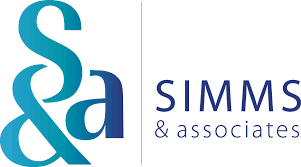We’ve all heard the sales pitch: “This system will automate all your processes! It will solve all your problems!” And we all want to believe that it’s true because, let’s face it, if we can get a system to do the boring day-to-day tasks, who wouldn’t jump at that cost saving?
Reality vs. Theory
Unfortunately, the reality does not always live up to the theory. Why not? Because systems do not work in silos – they work as a cog in a larger technology environment. Often when systems are implemented, companies do not allocate adequate resources to documenting the processes related to this changing technology environment.
The Importance of Understanding Current Processes
Every successful system implementation starts with understanding and documenting the current processes and practices. What systems are involved? Who does the work? Are there downstream impacts if something were to change? Are there manual processes being used? Each of these questions, and the hundreds of others that should be asked, are essential knowledge basics moving into the design and build of a technology solution. The more you know at the start, the better and more efficient the new technology solution can be.
Planning for Future Processes
Asking these questions early will also open discussions on how processes will work in the future. What system will be the source of truth for what data? Who will be involved in the new processes? Is change management needed to bed in new practices? Does the new process document all impacts and downstream effects? Will the new system still have some manual processes?
The Reality of Manual Processes
This last question often comes as a surprise to companies. If a company is implementing a technology change to help automate processes, then there shouldn’t be any manual processes – right? In a perfect world, absolutely. In reality, we live in a world where things such as government legislation are written by people who don’t understand the practical implications of what they commit to paper. Lawyers don’t understand that their wording in a contract makes building a technology solution almost impossible. Commissions – in their desire to ensure workers are paid fairly – forget that technology solutions are not elastic bands that can be shaped whichever way to comply. These factors, among many others, mean that there will almost always still be manual processes.
The Crucial Role of Documenting Processes
Which brings us back full circle – why is documenting processes such an important part of a system implementation? Behind every successful system implementation is a plethora of well-thought-out and documented processes that flow across the whole technology environment. These documents take into account the who, what, when, why, and how of the whole environment. Everyone knows what is required of them, and where they fit in. Starting the development of these during the requirements and build phases of an implementation will assist in embedding the new system and understanding what other changes may need to be made to the technology environment as a whole. It will also give the system users time to understand what is being asked of them when the new system is live.
S&A’s Expertise and Advice
S&A are often asked by clients what the main concerns should be when implementing a new system. An almost universal reply is that a company needs to understand how a new system will impact their existing systems and setup, and that they need to invest time and resources into understanding their processes in order for an implementation to be successful. It is a universal fact, however, that there is usually only X budget for implementations, and Y items to be achieved – and process documentation is often in the bucket of items that get left behind.
While S&A can’t always assist with the budget issue, we can supply expert advice and business analysts to assist clients with the documentation of their processes, helping them to understand where they have been, and where they are going. Particularly in the WFM space, it is essential to understand all aspects of the business. Processes may not be the ‘coolest’ part of an implementation, but they are certainly one of the most important.
Contact Us
Implementing a new system can be a complex and challenging process, but you don’t have to do it alone. At S&A, we are here to help you every step of the way. Our team of expert advisors and business analysts can assist you in documenting your processes, understanding your technology environment, and ensuring a successful system implementation.
Don’t let the intricacies of process documentation hold you back. Contact us today to learn more about how we can support your business needs and help you achieve your goals.
Let us be your partner in navigating the path to a seamless and efficient technology implementation. We look forward to working with you!
